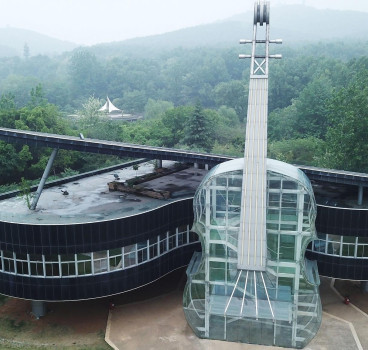Let’s give the “Wright” name to construction workers
There was a time in the past when construction workers were respected as revered craftspeople known as "wrights." The term "wright" has its roots in the Old English word "wyrhta," meaning "maker" or "worker." These early wrights were highly skilled artisans who possessed a deep understanding of their chosen material, be it wood or metal. Their expertise was not just about brute strength - their work demanded meticulous planning, precise execution and a keen eye for detail.
Wood Wrights
Wood was the most readily available material for centuries, making wood wrights some of the most sought-after craftspeople. From the carpenters who meticulously framed houses and barns to the coopers who crafted watertight barrels and the wheelwrights who built the essential wheels for transportation, wood wrights played a vital role in shaping the built environment.
Wood wrights, with their deep understanding and respect for this versatile material, were the backbone of construction and craftsmanship for centuries. Perhaps the most well-known type of wood wright, carpenters were responsible for the skeletal structure of buildings – framing houses, barns, and other structures. Their expertise involved not just strength and endurance, but also precise measurements and joinery techniques to ensure the stability and longevity of the structure. Skilled carpenters were highly sought-after, as their work formed the foundation for countless buildings, from humble cottages to grand palaces.
Their work was not solely utilitarian. Master carpenters, for example, were also responsible for intricate carvings and decorative elements that adorned churches, palaces, and homes. They wielded their chisels and saws like artists, leaving behind a legacy of craftsmanship that continues to inspire us today.
Using chisels, gouges, and mallets, they sculpted intricate designs, religious figures, and decorative elements that adorned furniture, doors, and architectural features. Their artistry added a layer of beauty and storytelling to otherwise utilitarian structures. Think of the ornately carved choir stalls in cathedrals or the detailed mouldings adorning grand staircases in historical homes – these are testaments to the skill of woodcarvers.
The impact of wood wrights extends far beyond the physical structures they built. Their dedication to quality, their innovative techniques, and their artistic expression continue to inspire modern woodworkers and craftspeople. Their legacy serves as a reminder of the importance of skilled craftsmanship and the enduring value of working with wood, a material that continues to inspire and shape our world.
Metal Wrights
While wood dominated construction for most of history, the rise of metalworking introduced a new breed of wrights – the blacksmiths and metalworkers. These artisans played a crucial role in creating tools, weapons and structural elements that were essential for building projects. The blacksmith, wielding his hammer and tongs against the fiery forge, transformed raw iron into nails, hinges, and other essential hardware that held structures together. They also crafted tools for farmers, carpenters, and other tradespeople, their work forming the backbone of numerous industries.
As metalworking techniques advanced, specialisation emerged. Ironworkers focused on large-scale projects, using blast furnaces to produce molten iron used for bridges, cannons and other heavy structural elements. Founders, on the other hand, employed techniques like sand casting to create intricate metal objects like sculptures, bells and printing plates.
Security was paramount, and locksmiths were entrusted with the intricate task of creating and maintaining locks. Their expertise in crafting complex mechanisms ensured the safety of homes, businesses and valuables.
The influence of metal wrights extends far beyond the tools, weapons, and structures they created. Their innovations in metalworking techniques, their use of heat treatment to enhance metal properties and their ability to create complex shapes laid the foundation for the modern metalworking industry.
From Wrights to specific trades
As societies grew more complex and construction projects became larger and more intricate, the need for specialised skills grew. The broad umbrella term "wright" gradually gave way to more specific designations. Wheelwrights became distinct from carpenters and blacksmiths from ironworkers.
This specialisation allowed for a deeper mastery of particular crafts. Masons, for example, emerged as experts in working with stone, while bricklayers honed their skills in creating strong and durable walls. Plumbers, roofers and electricians – all these professions branched out from the broader category of wrights, each contributing their expertise to the ever-evolving world of construction.
The Rise of the "Construction Worker"
The 20th century witnessed a significant shift in the construction industry. The use of prefabricated materials, standardised components, and heavy machinery transformed construction from a craft-based endeavour to a more industrialised process. The term "construction worker" emerged during this period, encompassing a broader range of workers with varying skillsets, working together to complete large-scale projects.
A legacy of skill and innovation
While the term "wright" may have faded from common usage, the legacy of these skilled craftspeople lives on. Their dedication to quality, their meticulous attention to detail and their deep understanding of materials continue to inspire modern construction professionals. Today's construction workers, wielding advanced tools and technologies, build upon that foundation of skill and innovation.
The future of construction promises even more exciting advancements. From the integration of prefabrication and modular construction to the exploration of sustainable materials and cutting-edge building technologies, the industry is constantly evolving. As we move forward, understanding the rich history of construction workers, from the all-encompassing wrights to the specialised tradespeople and modern construction workers of today, allows us to appreciate the dedication and ingenuity that have shaped the world around us.
Additional Articles

A look inside China’s architectural symphony
You do not expect to see a giant, glistening piano appearing on the horizon, but this is no mirage – it's the iconic Piano House, a marvel of quirky architecture that blends art, music and function...
Read moreExoskeletons that will transform construction
We have all seen the “Terminator” films and “Iron “Man” where it is possible to do some amazing things. Just think what could happen if you were able to lift heavier materials, reduce muscle strain...
Read more

The Hoover Dam’s concrete still curing after 80 years
Standing proudly amidst the rugged terrain of the Colorado River, the Hoover Dam is a just a marvel of engineering and a testament to the precision and foresight of its builders. More than 80 years...
Read more